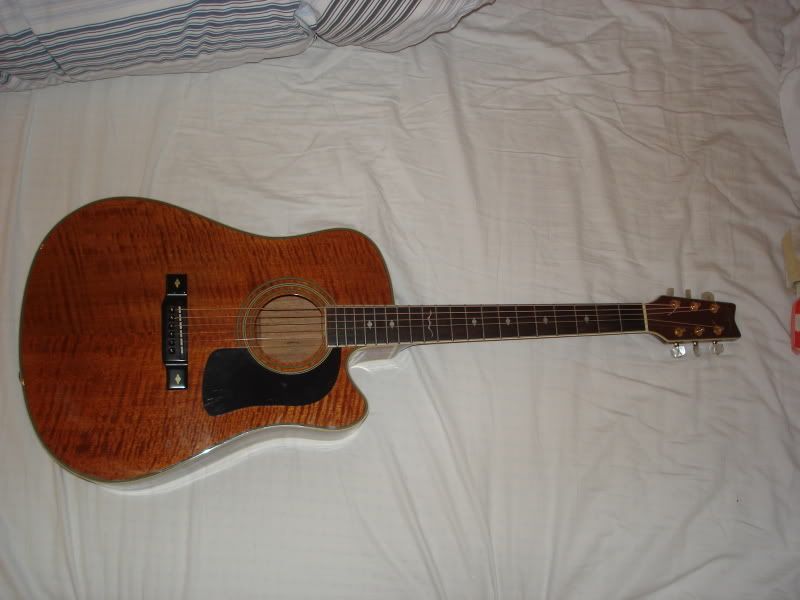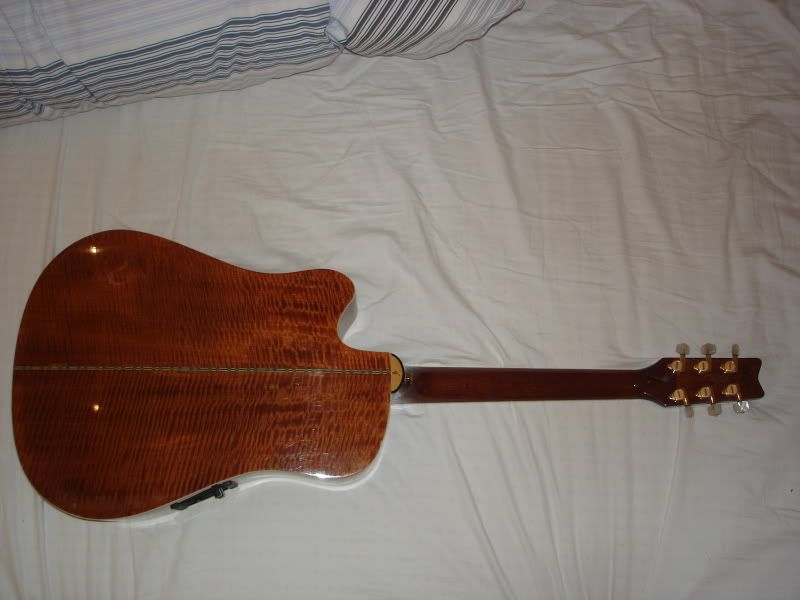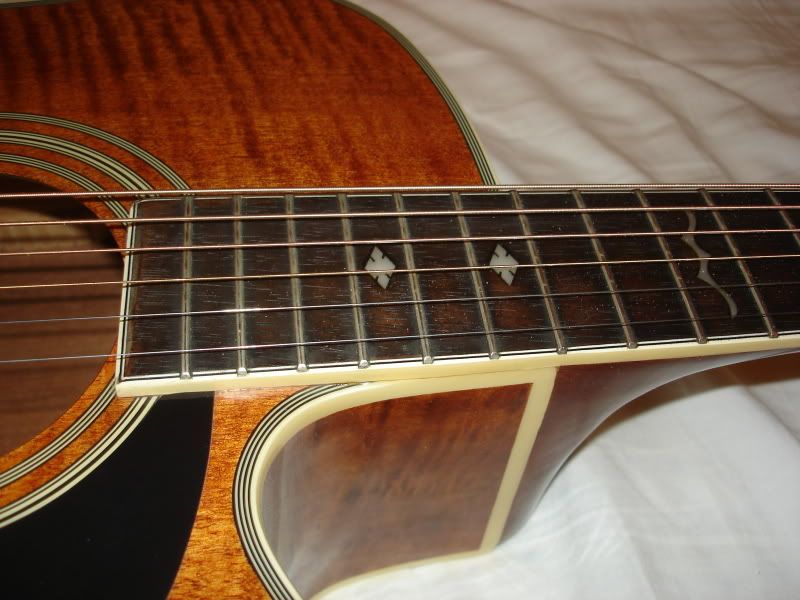I am evaluating a Washburn with high action for a friend. I have concluded that it needs a neck reset and we are now discussing wether it is worth to put in the work/money in this guitar or if he shall search for a new guitar. Being a hobbyist I am shure I could do the work at below market price, but before I start anything I´d like to know what kind of neck joint these instruments have.
It is a fancy looking all laminate guitar, and it actually sounds quite nice, but it is a bit of a beast to play, especialy up the neck.
Does anyone know the joint type?
Views: 1741
Replies to This Discussion
-
I don't know the neck joinery answer but I have a question:
Why is it difficult to play? That looks like a really good action at the 12th fret. Your friend may be falling victim to fairy tales of ultra low action on an acoustic guitar.
In my professional opinion; it's fine. Although there are no pic's showing the neck angle, it DOES NOT need a neck reset to correct the action.
Can you give us more info on the specific complaints?
Other comments/suggestions/observations from the crew?
-
Paul,
The guy is normally playing electrics and he claims it is hard to play this one, which it wasn´t when he bought it 10-15 years ago.
To my standards 3.1 mm action at 12th is a bit high. It is the same at both high and low E. A straightedge along the fretplane falls 2,5 mm below top of bridge and there is a clear change of neck angle at 14th fret. To get the action where He wants it (2,4 mm att low E and 1,7 at high E) I´d have to lower the saddles (individual saddles standing on some sort of UST) by approximately 1,5 mm. This would also require ramping of the bridge to get acceptable break angle and i´d have to plane the fretboard overhang as it would rize up into the envelope of the vibrating strings. All this would result in a playable guitar but with very low stringheight above the top in front of the bridge.
Nevertheless i will discuss this option with the owner.
More pictures:
-
Maybe a truss rod adjustment?
-
After viewing your latest pictures I'm convinced that it doesn't need a neck reset. That era of Washburns were extremely overbuilt. What they lack in tone, they make up for in durability. Doing a neck reset on it as the primary fix is putting the cart miles ahead of the horse.
+1 on the truss rod adjustment. With the neck properly adjusted, the geometry will be almost perfect. If you wish for it to be 'perfect-perfect', I bet you'll find some factory installed shims under the saddle assembly to lower the entire saddle unit. I bet that will fix it right up.
Best of luck (-:
-
I already tested tightening the trussrod. I can get the neck to be practically straight from 14th fret to the nut, but as said (but hard to see in the picture) the fretboard changes direction at 14th. The fretboard overhang makes the opposite of the "fall off" I am used to seeing.
I will try some more but as the straightedge falls low at the bridge I still believe it is in need of a reset. The question is if it´s worht the effort.
-
pleeeeez leave this guitar alone even if it is a Washburn.Put some slinky's on it an' send it home to papa
-
I guess what You´re saying Tim, is that it´s not worth the effort...
I think it will end with "what can be achieved without a reset", given that the cost for a reset is in the neighborhood of 300$ and You can buy a descent new guitar for 500.
-
I understand what you're saying Magnus.
You're faced with the classic rising hump in the FB.
Here's what I'd do (the simple version is described) before cranking up the old steam kettle:
Pull all the frets. Plane & re-profile the FB to eliminate the hump and add the fall-away to the end of the board.
Since the customer is primarily an electric player, I'd install wider & taller frets for a familiar (to him) feel.
After the re-fret, roll the edges of the FB.
That should yield a "smaller feeling" neck and adequate action. It won't be perfect but then again, this isn't a high $$$ instrument. These go for about $125 USD in mint used condition in the US and are considered "campfire guitars".
To answer the "Is it worth it?" question...in our shop; No.
Best of luck with whatever path you choose (-:
-
That neck is almost assuredly epoxied in. There is little to no chance you'd ever get the joint apart, as epoxy is to steam what Chuck Norris is to...well, anybody else!
-
Purdy wood, though !
-
My bet would be 5-dowel butt joint.
-
nothin' hurts worse(I've heard)than a 5 dowel buttjoint!!!!
© 2026 Created by Frank Ford.
Powered by
![]()






